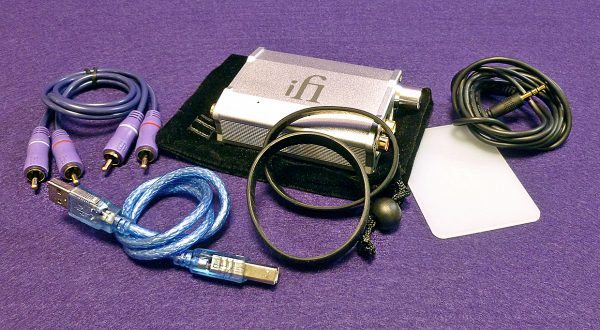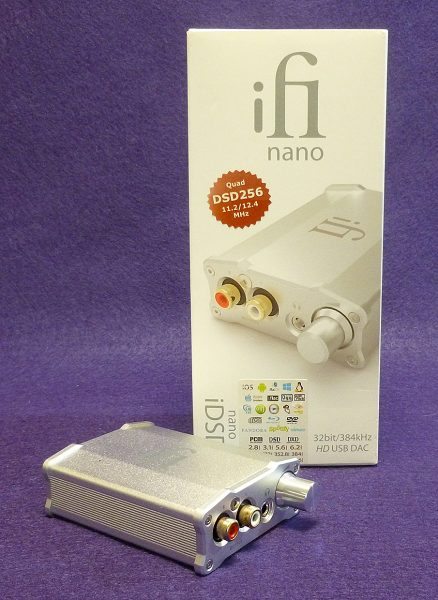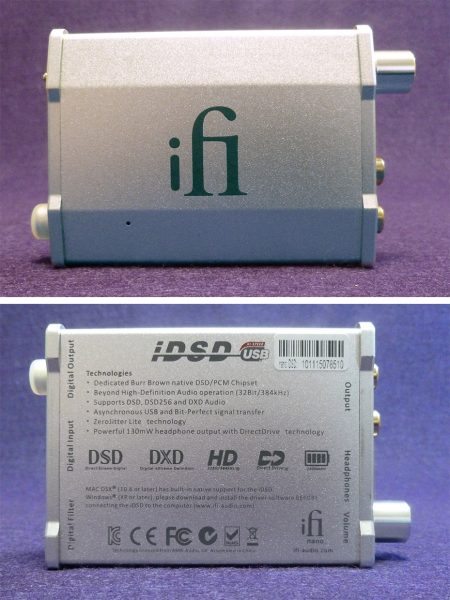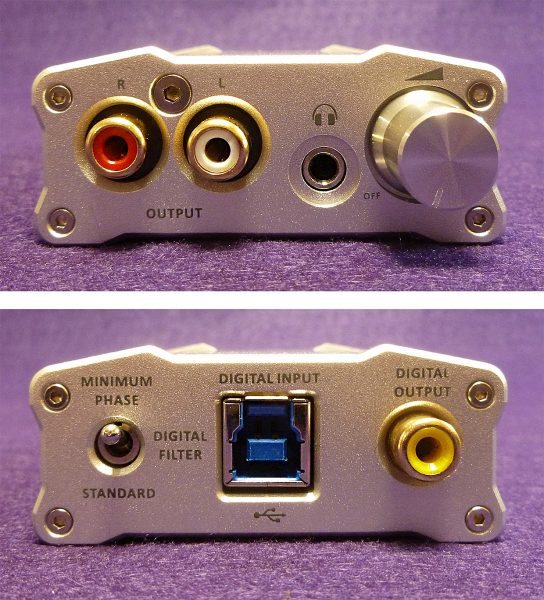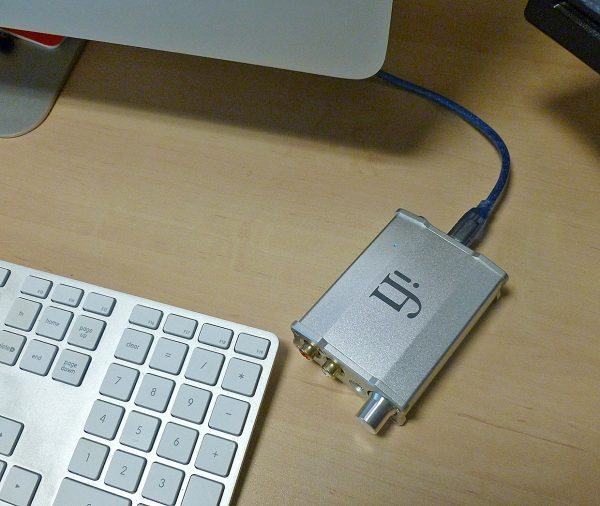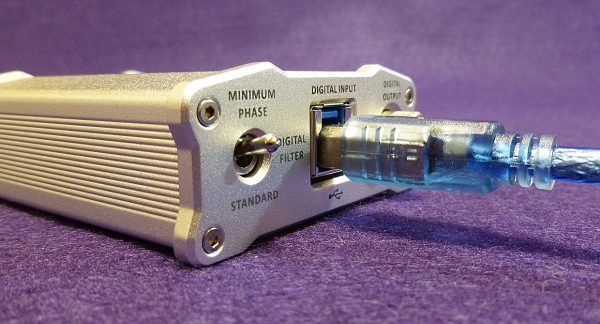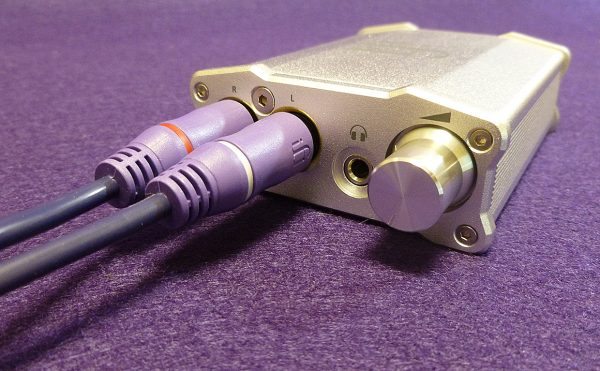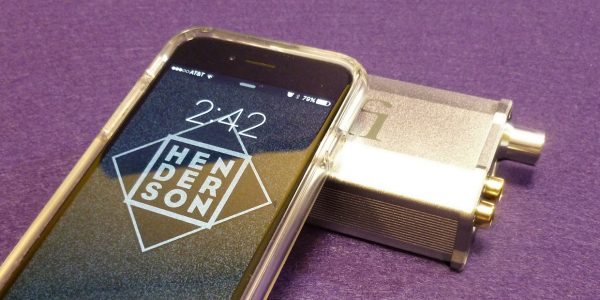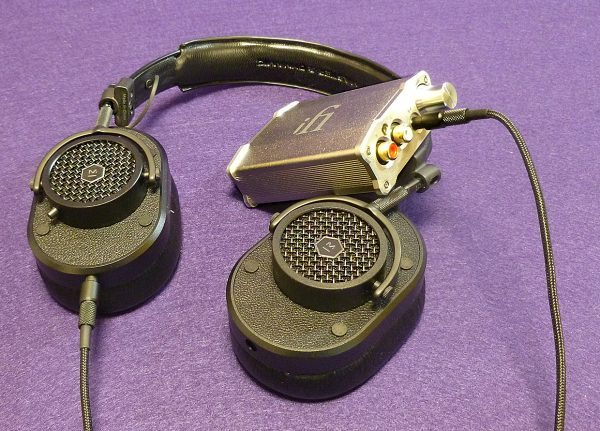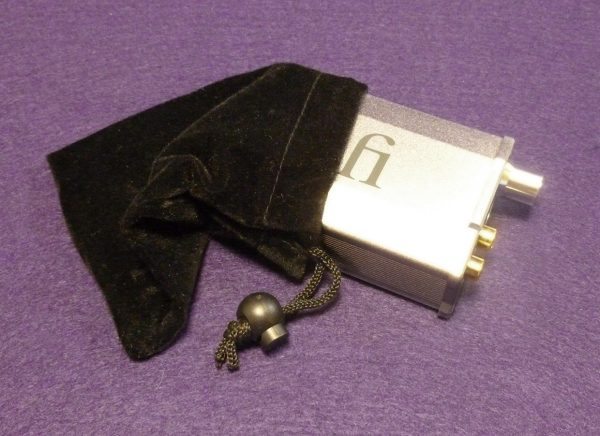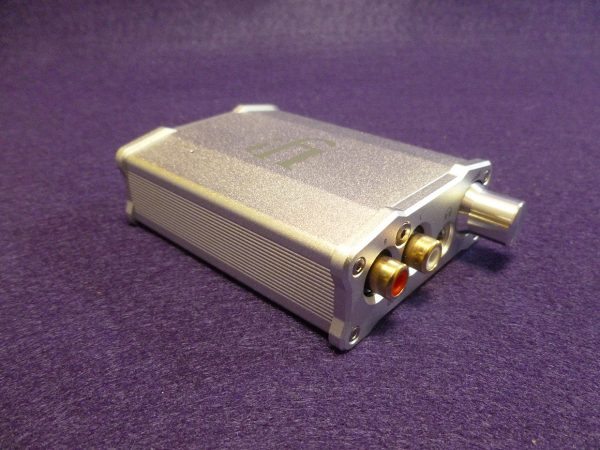I’ve always been a fan of digital audio converters (DAC). They can make good headphones and earphones sound better by bringing out the best they have to offer. Audio listening is only as good as the weakest link, so if you’re wondering whether those expensive headphones can sound as good as advertised, upgrading the DAC in your computer could be the answer. One such solution is the iFi Nano iDSD DAC and Headphone Amp.
That’s a lot of capital letters which can be confusing. We’ll just say iDSD DAC and leave it at that and get to the techie stuff later. Now, let’s get this out of the way early in the review: If you are using headphones under $150 or—heaven forbid—those free buds that came with your smartphone, stop reading and save your money. The iDSD DAC will not improve your audio enough to warrant its cost. Without trying to sound snobby, the iDSD DAC is meant to improve headphones/earphones that are designed to bring out every detail possible from music. Cheaper headphones simply cannot do that. The old saying, “You can’t make a silk purse out of a sow’s ear” holds true in this instance.
The iDSD DAC is designed to take a good headphone’s audio quality to another level by bypassing the computer’s internal DAC, which is cheap and usually not that good. I’m using my iMac’s DAC as an example. The DAC in this otherwise wonderful computer is not that great. If I just plug headphones into the mini plug port on the back of the iMac, it may sound okay, but once music reaches a challenging part—_such as deep bass or complicated instrumentals—the iMac’s DAC will either contribute to distortion or fail to extract detail in the recording. An external DAC, like the iDSD, can work around that by taking the direct digital signal from one of the iMac’s USB ports and do a better job of converting this signal from numbers to analog sound, which is what we hear. Note that you cannot hear digital—it’s just numbers.
For Apple Mac users, it’s strictly plug-and-play for the iDSD. Windows users need to download some drivers available from the iFi web site. Here’s a weird iDSD tip when connecting to a computer: To use USB power (and also charge the iDSD’s rechargeable battery), connect the USB cord first and then turn the iDSD on. To use battery power, turn the iDSD on before connecting the USB cord. Like I said, weird. It does beg the question—if the iDSD is being connected to a computer, why would anyone want to run off the internal battery at all?
Nothing is more frustrating than spending a small fortune on a good pair of headphones only to compromise their capabilities with substandard components in the audio chain. As I said earlier, any listening experience will only be as good as the weakest link. The iDSD DAC contains some of the better digital components currently available, such as a Burr-Brown DAC chip that can play all digital formats natively (no converting from one format to another). This would include PCM from 16/44kHz all the way up to 32/384kHz, Quad-Speed DSD to 11.2/12.4MHz, and DXD up to 384kHz. Understand any of that? Me neither. It simply means that the iDSD DAC can handle just about any high resolution formatted song you care to throw at it. Many other DACs can only convert digital music files up to a certain detail level.
The iDSD is small enough to be (somewhat) conveniently used with a smartphone—in this review, an iPhone. A little known fact is that most smart phones can encode really high resolution music files natively with the right app, but can’t decode them (that’s the expensive part). The iDSD DAC can. To do this, there are two requirements: a music player app (not Apple’s) like Onkyo’s HF Player app and an optional Apple Lightning to USB Camera Adapter. You read that right, Camera Adapter. By connecting the iDSD to the iPhone via the Lightning to USB Camera Adapter and using the Onkyo app, headphones can hear hi resolution audio from an iPhone. How cool is that?
I listened to various high resolution song files with and without the iDSD DAC. I didn’t go into all the different file types and bit rates, because The Gadgeteer is not an audiophile site. There are extremely detailed reviews of iFi components online. My review is strictly a consumer approach of someone who appreciates music on a fan level with limited resources.
Let me state here what I have said in previous external DAC reviews: The difference between using a DAC or not isn’t fully realized until you use it for a few weeks and then disconnect it. Only then will you appreciate the advantages of using the iDSD DAC.
I tried the iDSD with four different kinds of headphones: The Grado SR325, Bowers & Wilkins P7, Master and Dynamics MH40 and Klipsch X20i earphones (review coming later).
Nothing has the soundstage of open-backed headphones, such as Grado. The openness of the SR325 makes the music sound more like a terrific set of speakers than headphones—less ‘in your head” sounding. However, those sitting next to you can hear what you hear—that’s what open-back means. Without the iDSD, music sounds a bit more compressed and less dramatic. There was more detail in the mid to high frequencies.
The sonic differences using the B&W P7 headphones was more dramatic. With the iDSD, not only was the volume increased but the musical detail of a song like Amber Rubarth’s “A Kiss to Dream On” was clearly on a different level. This is a binaural recording (a method of recording using a dummy head with only two microphones where ears would be), so the ability to hear where each musician was in relation to the mics was amazing. The iDSD allowed this effect to be a bit more evident.
I decided to give Led Zeppelin a try with the iDSD. Granted, Led Zeppelin is not much of a decent test for audio quality. Some of their recordings were criminally sloppy. However, I—along with almost the rest of the world—really like Led Zeppelin, so I listen to them. “Kashmir.” from “Physical Graffiti” is probably my favorite Zep song. It has drama, courtesy of John Bonham’s powerhouse drumming combined with orchestral strings and Robert Plant’s gritty wailing. What more could you want? The iDSD DAC adds a level of intimacy to the song that a lone headphone port fails to convey. It’s not a difference that will make your heart skip a beat, but it’s enough to appreciate. Once again, see my note about using the iDSD for a while and then not using it to really appreciate its contribution to musical pleasure.
I wanted to use the iDSD DAC with a great pair of earphones as well as headphones. The Klipsch X20i earphones are fairly new in my review queue, so I just had to try them out with this DAC. I’m glad I did. The difference between the iMac’s headphone port and the iDSD DAC is eye-opening. “Suite: Judy Blue Eyes” from Crosby Stills and Nash’s debut album is much more revealing. The vocals sound independent which only adds to the mystique of the amazing tight harmonies. The bass guitar is sharper and more distinct using the iDSD. The song just glistens as opposed to sounding like a very good radio tune coming straight from the iMac. Based on this test, reviewing the X20i earphones is going to be fun!
Again, remember that I was performing my audio comparisons using very good headphones—and earphone. The improvements from the iDSD won’t be nearly as apparent—or even noticed—on lesser quality phones.
iFi Audio makes many different components to bring out the best that digital has to offer depending on your ears and your wallet. The iFi Nano iDSD DAC and Headphone Amp is a good start into the maze of digital audio. Its $200 price may give you pause, but considering everything it can do combined with a decent pair of headphones, the iDSD DAC could be all you need for quite a while to get the best from a computer or digital audio player.
Source: The sample for this review was provided by iFi. Please visit www.ifi-audio.com for more information and Amazon to price check.

